IJG Business Climate Monitor July 2019

Upward movements on both the main BCM index and the leading indicator (which seeks to pick up future trends) continued to suggest that better economic times lie ahead. Despite this, the Business Climate Monitor still indicated that the economy is contracting rather than expanding. There are some signs that the economy is consolidating although it […]
African Growth & Opportunity Act

The African Growth and Opportunity Act (AGOA) aims to provide improved access to the US market for sub-Saharan African countries. Namibian businesses have not taken up many of the opportunities afforded by AGOA to export to the US market. This publication, produced by the Institute for Public Policy Research (IPPR) with the support of the […]
IJG Business Climate Monitor June 2019
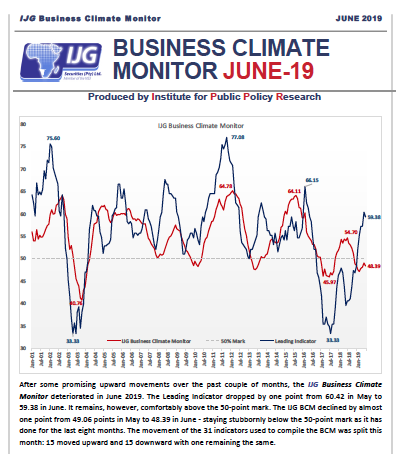
The IJG Business Climate Monitor deteriorated in June 2019 following promising upward movements in previous months. Overall, the IJG BCM indicates that the economy is still struggling to move out of negative territory despite some signs of future relief.
IJG Business Climate Monitor May 2019
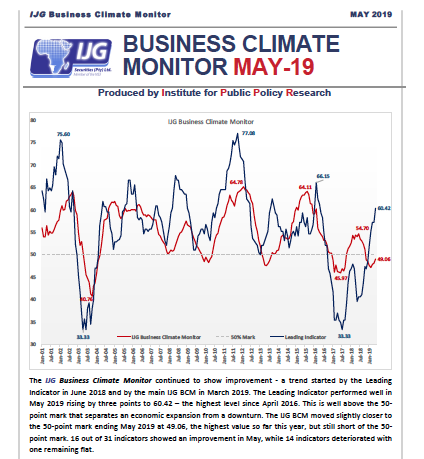
The IJG Business Climate Monitor continued to show improvement in May – a trend started by the Leading Indicator in June 2018 and by the main IJG BCM in March 2019. While business sentiment may be rising, it is still the case that Namibia continues to face considerable economic headwinds.
Public Procurement Tracker Namibia

Recent statements by senior government figures indicate that the problems that have been experienced with the implementation of the Public Procurement Act since 2017 can no longer simply be described as ‘growing pains’. The latest edition of our Procurement Tracker bulletin examines these recent pronouncements on the faults and gaps in the present system as […]
IJG Business Climate Monitor April 2019
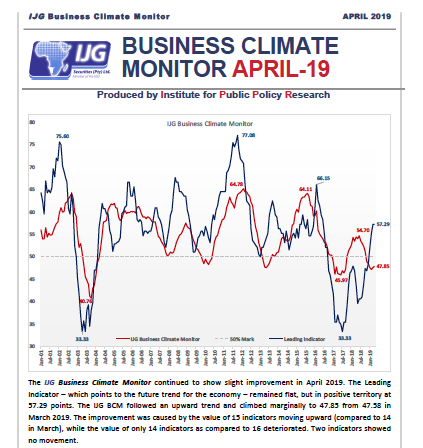
The IJG Business Climate Monitor continued to show slight improvement in April 2019. The Leading Indicator – which points to the future trend for the economy – remained flat, but in positive territory at 57.29 points. The IJG BCM followed an upward trend and climbed marginally to 47.85 from 47.58 in March 2019.
Digital Democracy
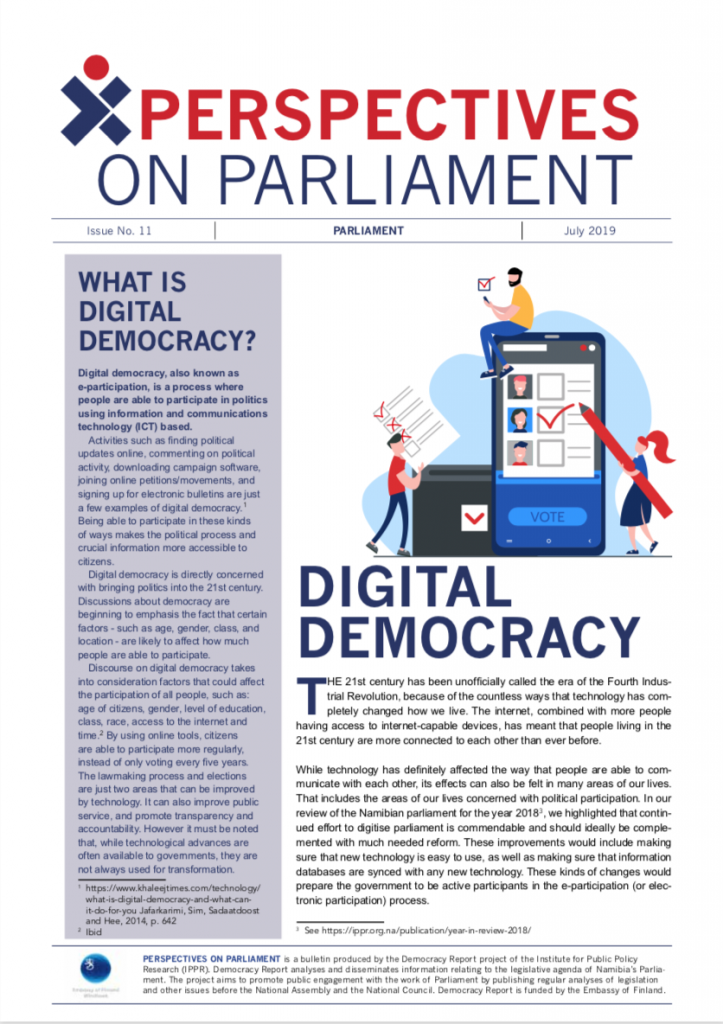
While technology has definitely affected the way that people are able to communicate with each other, its effects can also be felt in many areas of our lives. That includes the areas of our lives concerned with political participation. In our review of the Namibian parliament for the year 2018, we highlighted that continued effort to digitise parliament is commendable and should ideally be complemented with much needed reform. These improvements would include making sure that new technology is easy to use, as well as making sure that information databases are synced with any new technology. These kinds of changes would prepare the government to be active participants in the e-participation (or electronic participation) process.
How to Participate in Government

There are three branches of government: the legislative (parliament), the judiciary (courts) and the executive (parliament). The constitution is the supreme law of the country, which contains principles that keep the branches of government from interfering with each other, as each branch is meant to function independently of the other.
The public can participate in some of the actions of these branches, but only up to a certain point. Firstly, of course, Namibian citizens have a constitutional right to vote in National Elections every five years, and therefore choose the members of the National Assembly. In this way, they are able to influence the composition of the legislature and the executive, as Cabinet members are traditionally chosen from the National Assembly.
Namibia QER Quarter 2 2019
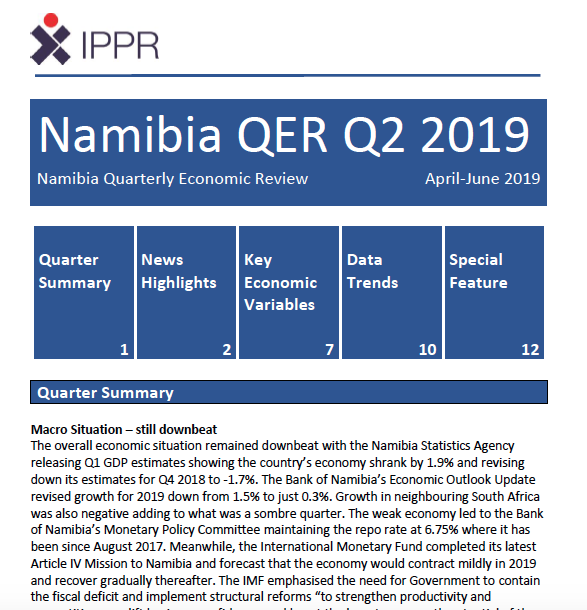
The latest quarterly economic review from the IPPR examines economic developments that took place in the second quarter of 2019. This edition also includes a special focus on public debt. Produced with the support of the Hanns Seidel Foundation.
Growth at Home Four Years On

Namibia’s plan for industrialisation, Growth at Home, was adopted in early 2015. The 52-page policy guide represented a clear interventionist-turn in the government’s economic policy. As if to indicate the new approach, the Ministry of Trade and Industry was renamed the Ministry of Industrialisation, Trade and SME Development (MITSMED) in the same year. But since […]
